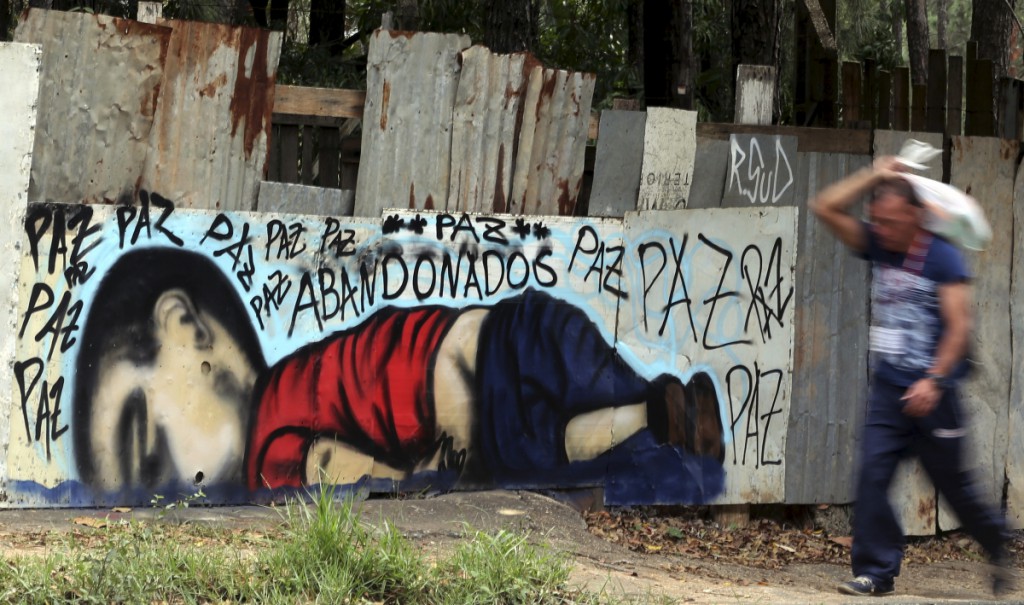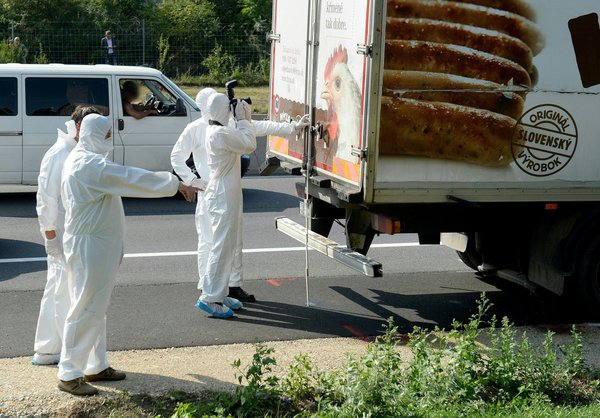Feeling Good About Feeling Bad About Aylan Kurdi

Post by Rebecca Adelman, University of Maryland, Baltimore County
The day after the photos of Aylan Kurdi appeared online (and everywhere), I typed a “d” into my Google search bar and its first auto-complete suggestion was “drowned syrian boy.” Coincidentally, or by the eerie prescience of the algorithm, that is actually what I was looking for. The speed with which the search engine guessed my intention and the minimal effort subsequently required to access these photos—I didn’t even have to finish typing, just hit “Enter”—is representative of the simple spectatorial task that they set up.
I am not suggesting that the story the photographs tell isn’t wrenching (it is); but the difficulty of the image is the very thing that makes spectatorship of it easy. Certainly, spectators far removed from the Kurdi family’s suffering might genuinely experience the photos as painful. But the experience of feeling bad about the photos is accompanied by a range of sentimental rewards that ameliorate this discomfort. In part, the hyper-visibility of Aylan Kurdi is a function of the vacuous efficacy of social media, but the clicktivism it inspired is more a symptom than a cause.
Compared to other images begotten by the ongoing war in Syria, the photos of Aylan Kurdi demand relatively little of their viewers, cognitively or emotionally.

This war has been illustrated by photos of dead and dying children from the outset. In the autumn of 2013, activists uploaded scores of photos and videos documenting the casualties of the Assad regime’s chemical weapons attacks against Syrian civilians. Many of the victims were children, and many of them died in the presence of desperate parents and watchful cameras. The resultant pictures, however, did not provide unequivocal evidence of atrocity to viewers expecting to see the bloodier forms of injury and dismemberment that dominate familiar depictions of wartime casualties. Instead, the photos captured large-scale mortality caused by invisible trauma. This is, of course, the signature of a chemical weapons attack, but in order to fulfill their documentary function, the photos required expert interpretation and credulous spectators.
Seeking to galvanize popular and legislative support for his plan to intervene militarily in Syria, President Obama implored Americans to view the images and the Senate Intelligence Committee compiled 13 of the most explicit for review by its members and, presumably, the public. These images failed to persuade lawmakers or their constituents that the situation warranted U.S. involvement. Of course, there were many reasons for this reluctance and we cannot know if different pictures would have garnered different results, but it remains significant that these photos never achieved the iconic status that Aylan Kurdi’s already have.

Two years later, the more abstract photos of the truck abandoned on an Austrian highway with the bodies of 71 refugees, Syrians among them, decomposing inside, pose a different spectatorial problem. The photos do not show the corpses, so spectators can only peer at the truck and imagine its contents. News coverage of the story has been largely forensic in its orientation; this perspective risks objectifying the victims, a temptation grimly heightened by the advertisements decorating the sides of the vehicle. While European officials are compelled to infer the identities of the deceased from travel documents, mobile phones, and meager personal effects, curious spectators get only a hypothetical composite of anonymous dead.
The photographs of Aylan Kurdi, full of pathos and without gore, set up a more straightforward spectatorial project. Unlike the photos from the chemical weapons attacks, these do not require speculation about the mechanics of his dying – there is no mystery to drowning. And unlike the photos of the truck, these present a victim and a sanitized vision of death. Claims about the singular potency of the Aylan Kurdi photos rest on an implied comparison to the images that preceded them. An article in the New York Times made an explicit distinction between these and those of the truck, asserting that the photo “personalized” the migrant crisis for a public that had merely been “shocked” by the previous story.
That comparison hinges on the presumed power of the Aylan Kurdi photos to disturb or inspire viewers, as does the editorial debate about whether or not to reprint them. Framing the issue in this binary way, however, obscures the complexities—the emotional contradictions, the ethical instabilities—inherent in any act of looking at casualty photos. Ultimately, the argument collapses a range of spectatorial positions down to two, apparently mutually exclusive, possibilities: ‘good’ spectators who look at the photos and feel outraged or sad, versus ‘bad’ spectators who look at the photos and do not.
Such ‘bad’ spectatorship is often attributed to emotional laziness, an inability or unwillingness to be moved. But ‘good’ spectatorship here requires only minimal emotional ambition; it is largely a matter of channeling the cultural, historical, and political forces that instruct and condition our sentiments, predisposing us to grieve for deaths that look like this. Adhering to those codes by feeling appropriately bad might feel automatic or right, but it can also feel good.
I am not suggesting that those feelings of sadness are untrue or unreal, only that ethical spectatorship of these photos requires candor about the costs, benefits, and gratifications of looking at them. Aylan Kurdi’s small, carefully dressed body is poignant but also intelligible. Less decipherable pictures might leave spectators confused or adrift. His photos are frank documents of mortality, but characterizing them as ‘graphic’ overstates the difficulty of the spectatorial task they set up, and overshadows the extent to which the act of looking at them is facilitated and softened by its emotional rewards. An affective auto-complete.



[…] Rebecca Adelman, media & communications, comments on the now-iconic image of Aylan Kurdi, the th… […]
[…] a recent article posted on Antenna‘s website, Rebecca Adelman, an associate professor of media and communication studies, examined public […]